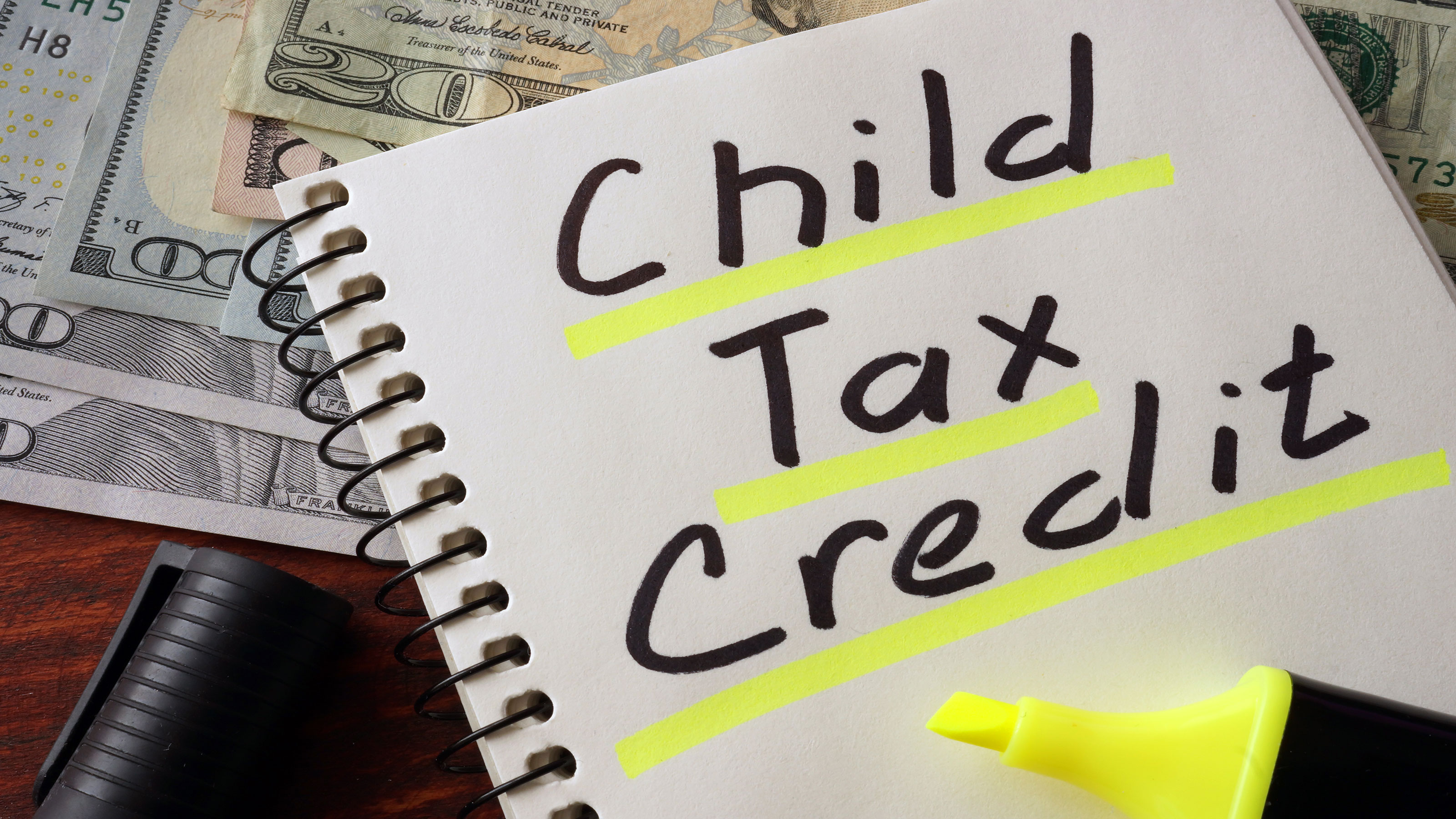Child Tax Credit Update: IRS Sending Letters to Families Who May Get Monthly Payments
The IRS has identified over 36 million families that may qualify for monthly child tax credit payments of up to $300 per child. The payments will begin on July 15.


The American Rescue Plan offers American families a bigger and better child tax credit for 2021. For this year only, the credit amount for many families is increased from $2,000 per child to $3,000 per kid ($3,600 for children under age six), 17-year-olds qualify, and the credit is fully refundable.
One additional major element of the new child tax credit regime requires the IRS to make advance payments of the credit to qualifying families in the second half of this year. The IRS will base eligibility for the credit and advance payments, and calculate the amount of the advance payment, based on previously filed tax returns. It will first look to your 2020 return, and if a 2020 return has not yet been filed, the IRS will look to your 2019 return.
The advance payments will account for half of a family's 2021 child tax credit. The amount a family receives each month will vary based on the number of children in the family, the ages of the kids and the amount of the family's adjusted gross income. Families who qualify for the full $3,000 or $3,600 credit will see checks of $250 or $300 per child for six months. Families with higher incomes who qualify for the $2,000 credit will get monthly payments of $167 per child for six months. (Calculate your monthly payment using Kiplinger's 2021 Child Tax Credit Calculator.)
From just $107.88 $24.99 for Kiplinger Personal Finance
Become a smarter, better informed investor. Subscribe from just $107.88 $24.99, plus get up to 4 Special Issues

Sign up for Kiplinger’s Free Newsletters
Profit and prosper with the best of expert advice on investing, taxes, retirement, personal finance and more - straight to your e-mail.
Profit and prosper with the best of expert advice - straight to your e-mail.
The IRS says that it will issue these monthly child credit payments to eligible families on July 15, August 13, September 15, October 15, November 15, and December 15. Most payments will be directly deposited into bank accounts. Families for which the IRS does not have bank account information could receive paper checks or debit cards in the mail. Most eligible families do not have to do anything to get these payments, provided the IRS has your 2019 or 2020 return information and you don't need to change anything to reflect current circumstances.
The IRS has started sending letters to more than 36 million families that the tax agency believes may be eligible for the advance child credit payments based on 2020 or 2019 return data. Those letters are generally for informational purposes. The IRS plans to send a second round of letters to eligible families later this summer, and that latter correspondence will list the family's estimated monthly payment.
Families who didn't file tax returns for 2019 or 2020 because their income is below the threshold required to file a return may have to jump through some hoops to get their child tax credit advance payments. The IRS will accept simple returns for 2020 on Form 1040 filed electronically or on paper. But you don't have to fill out the entire return. Instead, you will only need to include your filing status and identifying information, provide information about your children and dependents, and follow the rest of the IRS's instructions. Alternatively, if you had no adjusted gross income for 2020, you may electronically file a regular Form 1040. For a complete rundown of the IRS instructions for simple returns and zero AGI returns, see Child Tax Credit 2021: How to Get Monthly Payments if You Don't File Tax Returns. Note that you won't have to follow these procedures if you used the IRS's online tool for non-filers in 2020 to provide information to the tax agency for purposes of qualifying for stimulus payments. That tool was called the "Non-Filers: Enter Payment Info Here" portal.
The American Rescue Plan also requires the IRS to develop an online portal so that you can update your income, marital status, number of qualifying children and direct deposit information. So, if your circumstances change in 2021 from your last filed federal tax return, and you believe those changes could affect the amount of your child credit for 2021, you will be able to go onto that portal once it is up and running and update it for the correct information. You will also be able to check on the status of your advance payments on the tool. Additionally, people who want to opt out of the advance payments and instead take the full child credit on their 2021 return can do so through the online portal. The IRS is also launching another online tool to help families determine whether they qualify for the advance payments. Although the IRS fully expects to launch these tools by July 1, they are sure to need enhancements and adjustments as taxpayers begin to enter data into the tools. In other words, don't be surprised to see snags, at least in the beginning.
Challenges still lie ahead for the tax agency in implementing the new child tax credit program. The IRS is having to build a system to compute and recompute payments as people provide new information into the portals. The system must also be able to issue and track payments, as well as reconcile the payments with the taxpayer's credit taken on the tax returns. Additionally, one major issue that the IRS will need to deal with is how to minimize the potential for fraud when it comes to refundable child tax credits. For example, the IRS estimates that in 2020 it improperly paid $4.5 billion in such refundable credits. IRS Commissioner Charles Rettig appears to agree that there is an element of risk for increased fraud in the new child tax credit program.
For more information on this year's child tax credit, see Child Tax Credit 2021: Who Gets $3,600? Will I Get Monthly Payments? And Other FAQs.
Profit and prosper with the best of Kiplinger's advice on investing, taxes, retirement, personal finance and much more. Delivered daily. Enter your email in the box and click Sign Me Up.

Joy is an experienced CPA and tax attorney with an L.L.M. in Taxation from New York University School of Law. After many years working for big law and accounting firms, Joy saw the light and now puts her education, legal experience and in-depth knowledge of federal tax law to use writing for Kiplinger. She writes and edits The Kiplinger Tax Letter and contributes federal tax and retirement stories to kiplinger.com and Kiplinger’s Retirement Report. Her articles have been picked up by the Washington Post and other media outlets. Joy has also appeared as a tax expert in newspapers, on television and on radio discussing federal tax developments.
-
 Samsung Galaxy S25 Ultra for $4.99 a Month: A Closer Look at Verizon’s Deal
Samsung Galaxy S25 Ultra for $4.99 a Month: A Closer Look at Verizon’s DealVerizon’s aggressive pricing makes Samsung’s top-tier phone tempting, but the real cost depends on your plan and how long you stay.
-
 I'm 59 with $1.7 million saved and lost my job. Should I retire?
I'm 59 with $1.7 million saved and lost my job. Should I retire?We asked professional wealth planners for advice.
-
 4 Times to Say Yes to a Roth Conversion and 4 Times to Say No
4 Times to Say Yes to a Roth Conversion and 4 Times to Say NoRoth conversions should never be done on a whim — they're a product of careful timing and long-term tax considerations. So how can you tell whether to go ahead?
-
 Retirees in These 7 States Could Pay Less Property Taxes Next Year
Retirees in These 7 States Could Pay Less Property Taxes Next YearState Taxes Retirement property tax bills could be up to 65% cheaper for some older adults in 2026. Do you qualify?
-
 Estate Tax Quiz: Can You Pass the Test on the 40% Federal Rate?
Estate Tax Quiz: Can You Pass the Test on the 40% Federal Rate?Quiz How well do you know the new 2026 IRS rules for wealth transfer and the specific tax brackets that affect your heirs? Let's find out!
-
 5 Types of Gifts the IRS Won’t Tax: Even If They’re Big
5 Types of Gifts the IRS Won’t Tax: Even If They’re BigGift Tax Several categories of gifts don’t count toward annual gift tax limits. Here's what you need to know.
-
 The 'Scrooge' Strategy: How to Turn Your Old Junk Into a Tax Deduction
The 'Scrooge' Strategy: How to Turn Your Old Junk Into a Tax DeductionTax Deductions We break down the IRS rules for non-cash charitable contributions. Plus, here's a handy checklist before you donate to charity this year.
-
 Tax Refund Alert: House GOP Predicts 'Average' $1,000 Payouts in 2026
Tax Refund Alert: House GOP Predicts 'Average' $1,000 Payouts in 2026Tax Refunds Here's how the IRS tax refund outlook for 2026 is changing and what steps you can take now to prepare.
-
 New IRS Changes to FSA Contribution Limits for 2026: What to Know
New IRS Changes to FSA Contribution Limits for 2026: What to KnowHealth Care Flexible Spending Accounts have tax advantages worth looking into, especially in light of new IRS changes.
-
 Is a New $25,000 Health Care Tax Deduction Coming in 2026?
Is a New $25,000 Health Care Tax Deduction Coming in 2026?Tax Policy A proposal from GOP Sen. Josh Hawley adds to the chatter about health care affordability.
-
 Are You Middle-Class? Here's the Most Tax-Friendly State for Your Family
Are You Middle-Class? Here's the Most Tax-Friendly State for Your FamilyTax Tips We found the state with no income tax, low property tax bills and exemptions on groceries and medicine.